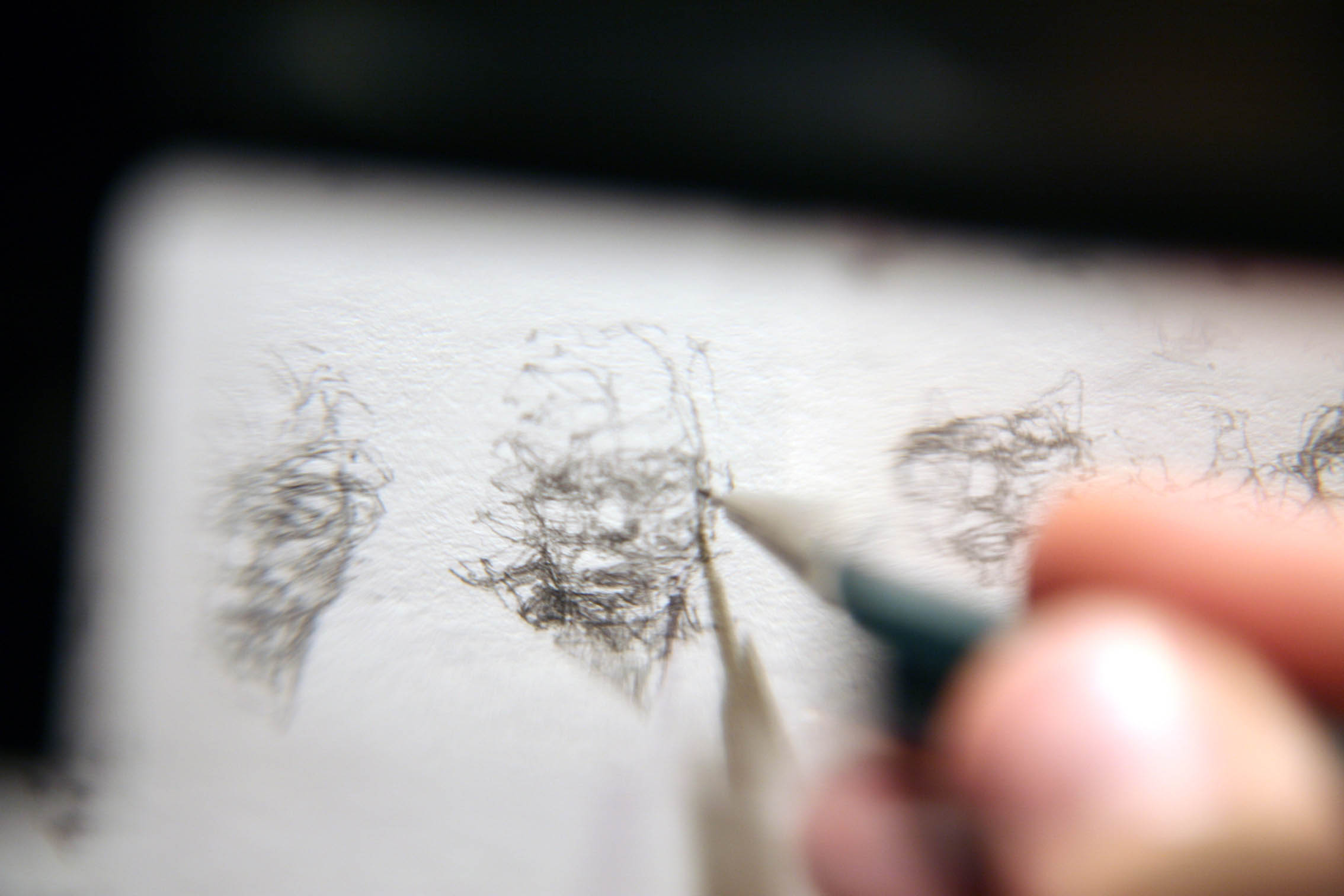COAX
Dryden Goodwin’s exhibition Coax brings together a selection of recent works and new work. Exploring the ambiguous gesture of intervening into the surface of photographs of people either with drawing, etching or creasing; the introduction of touch into the photograph is central. Goodwin explores the idea that a drawn, scratched or scored mark into a photograph is a kind of contact between artist and subject, between one individual and another. Opening up ways of thinking into the photographs, being interventions that can suggest both tenderness and hostility or empathy and imposition.
In the on-going series Cradle Goodwin etches into the print surface of black and white portraits he has made of passers-by on the streets. As Goodwin inscribes into the print, as if to reach back to the moment of the photograph’s original exposure and to his subjects’ pensive moments of reflection, the title Cradle takes on a literal tone. The work becoming a site of nurturing in which he wonders about these strangers, imagining an affinity and even an intimacy with them. Nevertheless, within the scratching of the print’s surface, a sense of violation also lingers, as does the subjects’ vulnerability to a less than benign form of voyeurism.
For Caul, Goodwin draws into the photograph using a digital drawing tablet, the artist presses onto its membrane-like surface with a digital stylus, the more pressure he exerts the deeper and more luminous the line he draws. A caul is the name given to a portion of the amniotic sac that can be left over a child’s face at birth. In some cultures, the caul has demonic associations; more usually it is considered a sign that the child is safeguarded, even bestowed with special powers. Goodwin’s title resonates with this association, reinforcing the visceral quality of the distinctive red lines that cover the faces of the people in the work, like blood vessels or raw tissue.
His most recent work Mould extends this exploration but here his working into the surface of photographs is given further dimensions. Using folding, scoring and puncturing, intense studies of heads are coaxed onto the cusp of three dimensions. In all senses of the word, Goodwin tries to discover a form for his speculations about these people, through his touch he attempts to reanimate the surface of the photographs. Presented separately and in clusters Mould suggests a proliferation of associations, a breeding ground of imaginative connections. Goodwin, interested in the re-introduction of the hand and mind into the infinitively reproducible photographic image, shapes and constructs these photographic surfaces into unique low reliefs.
The exhibition will also include the animations Rock and Shapeshifter.
